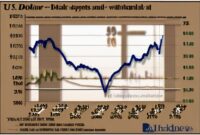7 Best ETF Trading Strategies: Exchange-traded funds (ETFs) are ideal for novice investors because they have many advantages, including low expense ratios, instant diversification and multiple investment options. Unlike other mutual funds, they also typically have lower investment thresholds, so you don’t need to be ultra-rich to get started.
Table of Contents
Below are seven of the best ETF trading strategies for beginners, presented in no particular order.
Key learning points
- ETF investors can use the same strategies used in stock investing, such as dollar cost calculations and sector rotation.
- The most popular ETFs track the S&P 500 index, but other ETFs focus on individual sectors or industries.
- Some ETFs provide access to strategies previously mastered by professionals, such as hedge funds that can return a multiple of the underlying index, and inverse ETFs that can increase in value as the index falls
The most popular ETFs are stock funds, but most ETFs invest in bonds, commodities, currencies and real estate. From January 2024 there will also be bitcoin futures ETFs.
Benefits of ETF Trading Strategies
For beginners, there are two main advantages to investing periodically. The first is that it provides discipline in the savings process. As many financial planners suggest, it’s extremely sensible to pay yourself first, which you can achieve through regular savings.

The other benefit is simple: you make more money. By investing the same dollar amount in the ETF each month, you can accumulate more units at lower prices and fewer units at higher prices. In the long run, this approach will be worth it as long as you stick with it.
Asset allocation
Asset allocation means splitting your investments across broad categories, such as stocks, bonds and cash, in order to mitigate the impact of a real downturn in any of these categories.
For example, young investors can invest 100% in stock ETFs until they are 20 years old. In the long run, they should maximize returns, and in the short run, they can wait for any chargebacks.
As these same investors reach their 30s, they can look forward to major changes such as starting a family and buying a home. Thus, a major drop in the stock market does not disrupt their lives.
Many ETFs are inherently structured to be diversified. For example, an ETF that tracks a broad market index, such as the S&P 500, contains a basket of stocks representing a broad range of companies from different industries.
For example, some ETFs track a specific sector, such as technology or energy. There is no known decline in this area.
Swing trading
Swing trades seek to profit from large swings in prices in stocks or other assets such as currencies or commodities. Unlike day transactions, they can accept anything from Sumagmamharbinger of a new phase of the economic cycle.

For example, suppose an investor invests in the biotechnology sector through the iShares Biotechnology ETF (IBB). If a recession appears imminent, the investor may decide to take a profit in this ETF and place it in a defensive sector such as Consumer Staples through the Consumer Staples Select Sector SPDR Fund (XLP).
Please note that there are risks associated with sector rotation. Success depends on market timing, and economists cannot easily predict economic cycles.
Repeat trading can also incur high transaction costs and tax implications, especially in terms of short-term capital gains tax.
Sell short
Short selling means selling stock or other borrowed assets. The investor makes money when the value of the asset decreases, or debt when it makes a profit. This is as dangerous as it sounds.
However, short selling ETFs are slightly less risky than shorting individual stocks, due to the lower risk of short squeezes in ETFs. This is a trading scenario in which the severely shorted asset spikes, forcing the short seller to take a loss.
Beginners, and individual investors in general, should stay away from double- and triple-leverage inverse ETFs, which seek results that are two or three times the opposite of an index’s price change in a day. There is a high degree of risk inherent in these ETFs.
Betting on seasonal trends
ETFs are great tools for taking advantage of seasonal trends. Let’s take two well-known trends of the season. The first is called the May Sale and Moving Event. U.S. stocks are worth $1.5 billion. are historically underperforming in the May-October six months compared to the November-April period. Another seasonal trend is the rise in gold in September and October, due to strong demand from India ahead of the wedding season and the Diwali festival.

The broader trend of market weakness can be exploited by shorting the SPDR S&P 500 ETF around late April or early May and closing out a short position in late October, just a typical market depression at that months after the event.
A beginner can similarly take advantage of gold’s seasonal strength by buying units of popular gold ETFs like the SPDR Gold Trust (GLD) in late summer and closing out the position a month or two later.
Remember, seasonal trends are not always as predicted.
Coverage
A beginner sometimes needs protection or downside risk protection in a large portfolio, perhaps inherited.
Suppose you inherit a large portfolio of US blue chips. and you are concerned about the risk of a sharp decline in U.S. stocks. One solution is to buy put options. However, since many beginners are unfamiliar with options trading strategies, an alternative strategy is to start with a short position in a broad market ETF such as the SPDR S&P 500 ETF or the SPDR Dow Jones Industrial Average ETF (DIA).
If the market declines as expected, your prime stock position is effectively protected while the decline in your portfolio is offset by gains in the ETF’s short position. Keep in mind that when the market goes up, gains are also limited because the gains in your portfolio are offset by losses on the ETF’s short position. However, ETFs offer beginners a relatively easy and efficient method of hedging.
Are all ETFs different or do they focus on certain sectors?
While some ETFs are designed to diversify and focus on a broad market index, others may focus on specific sectors or topics, creating diversity upon diversification. It is important for investors to understand the underlying investment and investment objectives of an ETF in order to assess its level of diversification.
What role does index tracking play in ETFs?
The primary role of an ETF is to track the performance of a specific index, and this process is known as index tracking. ETFs use a passive management approach, which aims to mimic the returns of the indexes they track.
Are there tax consequences associated with investing in ETFs?
The implications for butter because ETFs are by definition more diversified and less volatile than individual stocks.

If you are a novice investor, first consider what your financial goals are and what level of risk you can tolerate. Then decide how much you can invest each month. Ultimately, choose the ETF or two or more ETFs that can get you where you want to go.
One of the world’s largest crypto asset exchanges is here to help. Enjoy competitive rates and dedicated customer support while trading securely. You’ll also have access to Binance tools that make it easier than ever to view trading history, manage automated investments, view price charts, and make conversions for free. Create a free account and join millions of traders and investors in the global crypto market.



